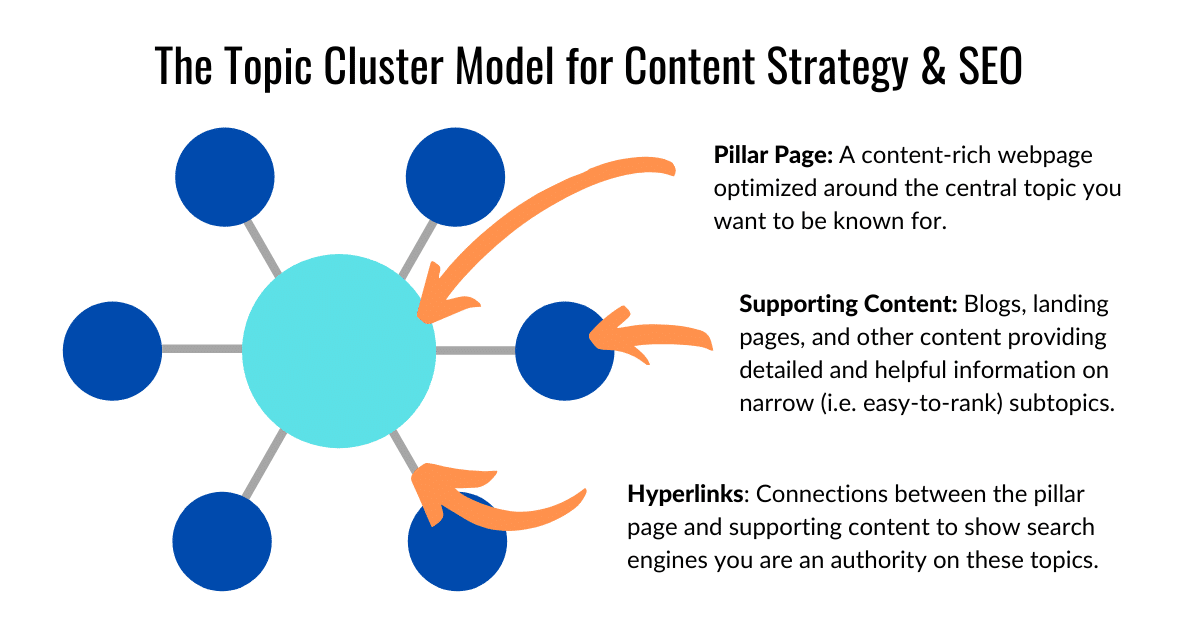Everyone wants their content to rank #1 on Google. But that’s easier said than done.
Earning a high search engine ranking doesn’t just happen. And it isn’t something you can hack. It takes intentional, strategic work to build up your authority and demonstrate to Google that you are a trustworthy enough resource to be displayed in search results.
Effective search engine optimization (SEO) is both a science and an art. It’s a science because there are specific steps that predictably lead to higher ranking content, like on-page keyword optimization, building your website authority on particular topics, and enhancing your website’s technical performance.
However, the most important ranking factor is how well your content matches user intent. This requires understanding the type of person that’s searching that term, what they expect from search results, and how to create content to match. It’s less of an exact science and more of an art form.
Getting SEO right isn’t easy. It takes time and a heck of a lot of practice. Even the most experienced search engine marketers are going to make mistakes along the way.
Here are some common SEO mistakes in digital content production that you should understand and work to avoid.
1. Not optimizing for the user experience.
If you’re taking the time to produce many pieces of content, you want people to read and get value out of them. That means optimizing each piece to provide the best possible experience for the user.
This starts with selecting target keywords that align with the questions an ideal buyer asks along their path to purchase. That way, your content attracts the right audience that can eventually lead to a customer base.
Once you have these keywords established, you can create highly relevant and helpful content that provide the best possible answer to the question your audience is searching for.
While you want to improve your search rankings as quickly as possible, be wary of trying to hack your way to the top of the search results. Many of these hacks will actually hurt your user experience and, thus, your rankings.
For example, keyword stuffing — or using your target keyword a hundred times on a single page — results in an awful user experience. While it used to be a best practice, it’s no longer effective. In fact, Google now penalizes sites that practice keyword stuffing.
Another hack to avoid is duplicate content. You won’t want a user to click around your site looking for more information, only to find the same thing over and over again. Google also penalizes sites that have duplicate content across the site.
While you should repurpose content for use in other places, you should never simply “copy-and-paste.” Crafting a pillar page from repurposed blog posts, for instance, should involve editing and re-contextualizing to make the new piece of content unique and helpful to the user.
Be patient, take the time to develop good content, and watch those results come in over time.
2. Treating search rankings like they’re static.
There are plenty of what I consider to be “SEO snake oil salesmen” who say they can guarantee you the #1 spot on Google, like it’s something static that doesn’t change on a daily basis.
Coincidentally (or not), these people also use many of the search hacks that I mentioned in the previous section.
One of the most common SEO mistakes is assuming that search engines aren’t static. And as a new business who wants to dislodge more established competitors, it’s to your benefit that they aren’t.
Google updates their search engine algorithm 300 to 600 times per year. One day, you may wake up to find that you lost your ranking through absolutely no fault of your own, but simply because Google deployed a new update that adjusted your ranking.
Bottom line: nothing you publish is guaranteed to stay on top of the search rankings.
That’s why once you publish a piece of content, you can’t just “set it and forget it.” You need to keep an eye on that page’s performance over time.
If the number of search engine impressions and average position changes (all of this data is available in Google Search Console), then you’ll want to consider re-optimizing the page against the content that now ranks in the top positions.
3. Not developing a full SEO strategy.
Getting a single piece of content to rank on Google is a great start. But one page won’t drive the traffic, leads, and revenue that your business needs.
That’s why a full SEO strategy matters. It means creating not just a lot of content that ranks, but letting your high-performing pages feed traffic to lower pages through internal linking.
While your initial SEO efforts will involve ranking for long-tail keywords with lower search volumes and less competition, you eventually want to rank for short-tail keywords.
Not only does that provide you with more traffic, but also establishes your authority on these broad topics in the eyes of both Google and your readers.
This is why developing topic clusters is such an important part of any modern SEO strategy:
When you have a topic cluster consisting of a pillar page, supporting content (typically blog post optimized around long-tail keywords), and internal hyperlinks that drive traffic from one page to the others, you can take one piece of content’s success and use it to drive success across all your content.
4. Neglecting technical optimizations.
When we emphasize the importance of quality, user-friendly content, there’s always the risk of a particular unintended consequence: devaluing of the importance of on-page technical optimizations.
Quality content is critical. But there are any number of technical problems which, while small, could tank your rankings:
- Title and meta description. This is probably the first thing you need to address, simply because a well-written SEO title and meta description is the first thing people see when they view your search results on Google. It should be clear and compelling.
- Structured metadata. Beyond title and meta description, there are other structured metadata you want to make sure are easily to search engines when they crawl your page. You can use a plugin like Yoast SEO in WordPress to automatically generate these, or manually add them to your HTML header.
- Load time. Faster websites rank higher. Any action you can take to reduce your site load time is going to improve your chances at ranking. Google’s free PageSpeed Insights tool can help you check your site speed to ensure there are no problems.
- 301 redirect loops. Establishing 301 redirects is a common website practice and are certainly better than having published hyperlinks that return 404 errors. However, if you have too many of these redirects, search engines start to see that as a knock against your website. So only use a redirect if you absolutely have to.
- 404 errors. This is probably the worst knock against your website, and it’s unfortunately all too common. Broken links are not only bad in terms of ranking, but they provide a terrible user experience.
Focusing solely on the content and ignoring these technical requirements can be just as detrimental as having bad content. Make sure you have all of these ducks in a row before you publish to ensure that no small, overlooked error is keeping your content from ranking.
5. Ignoring the rest of your content marketing strategy.
While search engine results are a top KPI for most content marketing operations, you shouldn’t focus solely on SEO and ignore all of the other aspects of your strategy.
The main reason is this: you could have the best content that ranks on search engines, but if it isn’t attracting customers, then you’re not driving tangible results for your business.
Focusing on conversion rates and attributed revenue is just as important as where you rank on Google. In fact, having a clear understanding of which pieces of content generate leads — and which ones don’t — can help you prioritize keywords and topic clusters when it comes time to generate new content.
Additionally, you want to ensure that you’re continuing to drive a steady stream of traffic to your website month after month through social media, email marketing, and even paid ads.
The more quality traffic you have on your website, the more authoritative your website will look to search engines. That means they’ll be more likely to increase your ranking going forward.
These five common SEO mistakes in digital content production have the potential to hurt your performance. But if you can avoid them, you’ll develop quality content that not only ranks, but drives real results for your business.
Schedule A Free Consultation







